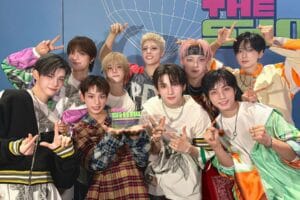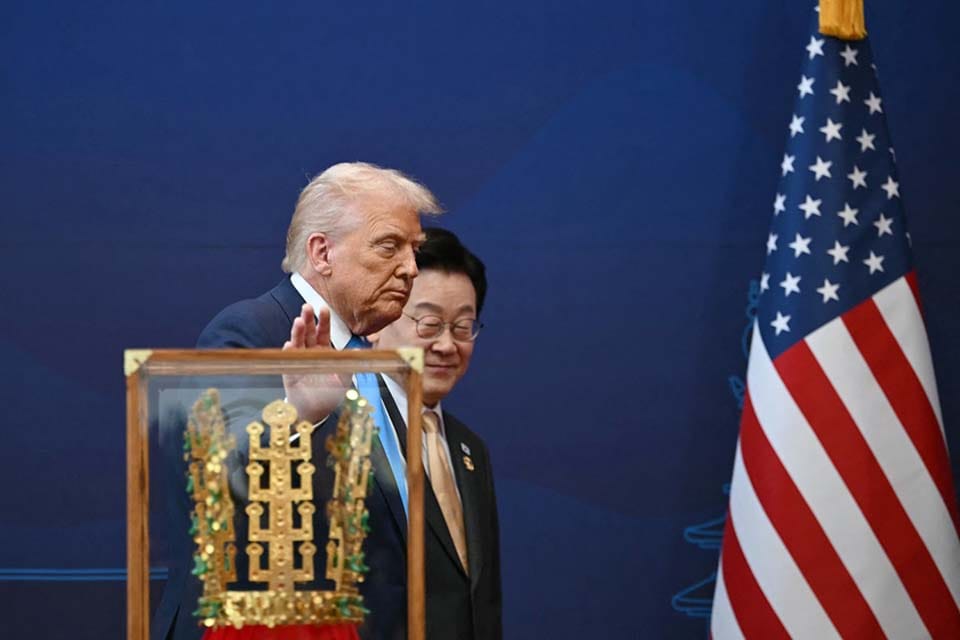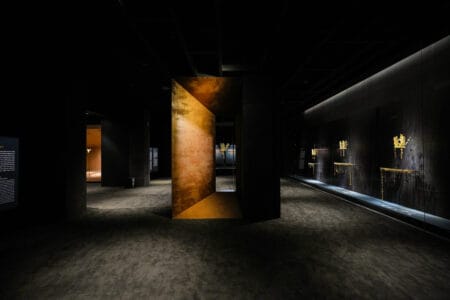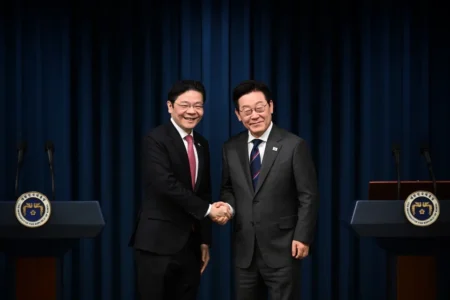November 4, 2025
SEOUL – A replica of a gold crown from the ancient Silla Kingdom was likely the most symbolic gift South Korean President Lee Jae Myung could offer visiting US President Donald Trump. The setting — Gyeongju, North Gyeongsang Province, the historic capital of Silla — was steeped in heritage, and the gesture came amid tense negotiations over hefty US tariffs and investment. The hope was that the glittering headpiece might charm Trump and help unlock a breakthrough.
Yet, despite South Korea’s earnest intentions, the image of Trump receiving a crown from a foreign leader sparked backlash among many Americans. Ironically, protests had erupted across the US with chants of “No kings,” a rebuke of perceived authoritarianism.
During the welcoming ceremony at the Gyeongju National Museum, following a 21-gun salute, Trump was presented with a gilded replica of a sixth-century Silla crown excavated from a royal tomb, a National Treasure of Korea. He also received the Grand Order of Mugunghwa, South Korea’s highest honor, named after its national flower, the Rose of Sharon, awarded to a US president for the first time. The medal, crafted in pure gold and adorned with rubies and amethysts, was a lavish tribute.
Lee declared, “The crown conveys the gratitude and respect of the Korean people for your contribution to peace on the Korean Peninsula.” The praise, however, felt premature — what Trump might call “upfront,” in his dealmaking parlance. Lee added, “The very fact that you have called for a meeting and said that you are ready to meet him anytime is already creating a warmth of peace.” Trump appeared pleased.
While many world leaders have sought to flatter Trump to avoid confrontation with the “bullying emperor,” North Korean leader Kim Jong-un has taken a different approach. He has consistently ignored Trump’s public overtures.
During his Asia tour aboard Air Force One, Trump told reporters that he was “100 percent open” to meeting Kim and acknowledged North Korea as “sort of a nuclear power” — a notable shift from the long-standing US policy focused on denuclearization, though nuanced and ineffective. This hinted at possible sanctions relief, a move viewed by many South Koreans as hasty given the North’s persistent threat.
Trump did not conceal his interest in an impromptu summit, reminiscent of their 2019 meeting at Panmunjom. He even suggested extending his stay in Korea if he could meet Kim. But Kim remained silent.
Instead, North Korea test-fired strategic cruise missiles into the West Sea the day before Trump’s arrival for bilateral summits with Lee and Chinese President Xi Jinping, held alongside the APEC CEO Summit.
Speculation swirled about a “Season 2” of the Trump-Kim bromance. Both leaders had touted their “great relationship” and “good memories,” despite the collapse of their Hanoi summit in 2019. Kim’s silence may be strategic, aimed at further bolstering his already heightened leverage. Still, his inaction isn’t entirely negative, even though Trump’s diplomatic overtures are the only visible path toward inter-Korean detente and peace on the peninsula now.
Given North Korea’s dire economic situation, Kim cannot afford to remain unresponsive indefinitely. He likely understands that normalizing relations with Washington is essential to lifting his country out of hardship. Yet, navigating the internal challenges of opening up and pursuing development while maintaining power will be a complex endeavor.
In the South, Lee and his team must reflect on the lessons they have learned from months of navigating Trump’s trade war. They have endured his unpredictability, fleeting focus and unconventional style. These experiences will be invaluable if Lee hopes to support Trump’s “peacemaker” role as his “pacemaker.”
Lee has demonstrated diplomatic finesse in two high-profile events: his August summit with Trump at the White House and the recent APEC gathering in Gyeongju.
Now, his administration must tackle the intricate details of the tariffs and investment deal secured under considerable pressure. Trump’s gifts to Lee — a baseball bat and ball — were described as symbols of “deep cultural ties and shared values between the two countries,” though they also invite reflection on the nature of such exchanges.
Trump departed Korea after his summit with Xi, skipping the APEC leaders’ forum. China, host of next year’s summit in Shenzhen, seized the opportunity to position itself as a champion of free and open trade. However, the joint declaration from the summit revealed a sobering truth: despite China’s efforts to engage countries worried about the retreat of the US, the old global order rooted in multilateralism and free trade may not be fully restored.
At his closing press conference with domestic and international media, Lee recounted a metaphor he shared with Xi during a cultural performance. “Yesterday, robotic butterflies flew over the audience; they were beautiful but, unlike real butterflies, they were noisy,” Lee said. “I told President Xi, ‘Next year, it would be nice if you could create butterflies that fly quietly.’ He replied, ‘Perhaps we should create butterflies that sing.’”
The metaphor, tied to the summit’s theme of “connection, innovation and prosperity,” captured a moment of poetic diplomacy. Whether it will resonate beyond the stage and foster regional progress remains to be seen.
Lee Kyong-hee is a former editor-in-chief of The Korea Herald. The views expressed here are the writer’s own. — Ed.







